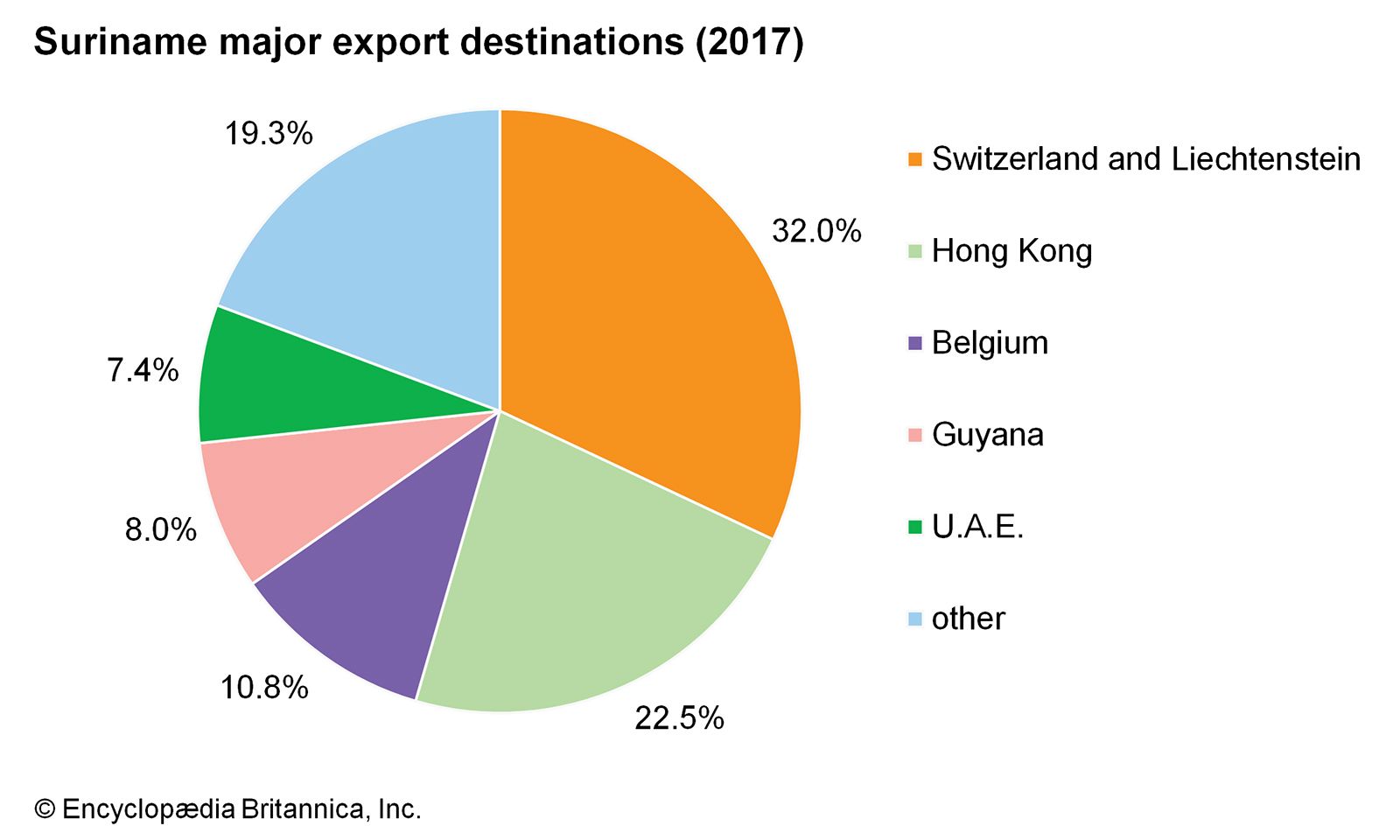
Suriname’s main trading countries
Suriname, located on the northeastern coast of South America, engages in international trade primarily with neighboring and global partners. Its trade relationships are largely shaped by its resource-based economy, particularly the export of minerals, oil, and agricultural products. Below is an overview of Suriname’s main trading countries:
Main Export Partners
1. United States: The U.S. is one of Suriname’s leading export destinations. Gold constitutes a significant portion of Suriname’s exports to the U.S., alongside bauxite, alumina, and oil products. The strong economic ties are facilitated by Suriname’s resource-driven economy and the demand for minerals in the U.S. market.
2. Netherlands: As a former Dutch colony, Suriname maintains strong historical and economic connections with the Netherlands. Key exports to this European partner include agricultural products, gold, and other natural resources. Suriname benefits from preferential trade agreements and cultural ties that bolster economic cooperation.
3. United Arab Emirates (UAE): The UAE is a growing export destination for Suriname, particularly for its gold and other precious metals. The UAE’s role as a global trade hub makes it an important partner for Suriname’s resource-driven exports.
4. Switzerland: Switzerland imports a substantial amount of gold from Suriname. Its well-established role in the global gold trade, combined with Suriname’s robust gold mining industry, makes Switzerland a key trading partner.
5. Canada: Canada is another significant trading partner, primarily due to its involvement in Suriname’s mining sector. Canadian companies invest in Suriname’s gold and mineral extraction, strengthening bilateral trade.
Main Import Partners
1. China: China plays a crucial role as a supplier of manufactured goods, machinery, electronics, and construction materials to Suriname. The bilateral trade relationship has expanded significantly in recent years, reflecting China’s growing influence in South America.
2. United States: The U.S. is a major source of imports for Suriname, including machinery, vehicles, refined petroleum, and consumer goods. The proximity and established trade routes facilitate a steady flow of goods between the two nations.
3. Netherlands: Besides being an export destination, the Netherlands is also a key supplier of goods to Suriname. Imports include machinery, pharmaceuticals, and food products, supported by the historical ties between the two nations.
4. Trinidad and Tobago: This Caribbean neighbor supplies Suriname with refined petroleum and natural gas, essential for the country’s energy needs. The geographic proximity and regional trade agreements enhance this partnership.
5. Brazil: As a regional partner, Brazil exports agricultural machinery, food products, and consumer goods to Suriname. The shared South American market fosters trade and economic collaboration.
Regional and Global Trade Dynamics
Suriname is also a member of the Caribbean Community (CARICOM), which promotes regional trade with countries like Jamaica, Barbados, and Guyana. The CARICOM Single Market and Economy (CSME) facilitates the movement of goods, services, and capital among member states, offering Suriname access to a broader market.
Additionally, Suriname’s economic diversification efforts are strengthening trade ties with Asian and European countries. Emerging markets in the Middle East and Africa are also becoming more prominent as Suriname seeks to broaden its trading partners.
In conclusion, Suriname’s trade partnerships reflect its resource-driven economy and strategic efforts to diversify its markets. The United States, Netherlands, UAE, and China are among the key players in Suriname’s trade network, ensuring the country’s integration into the global economy. These relationships are pivotal for sustaining economic growth and fostering long-term development.




Leave a Reply